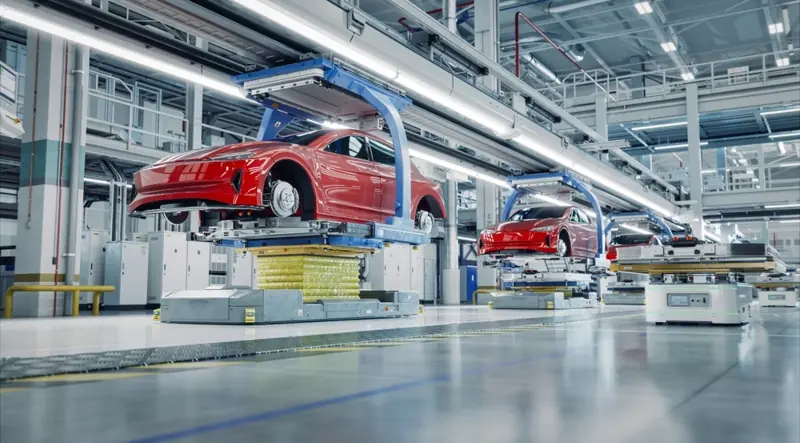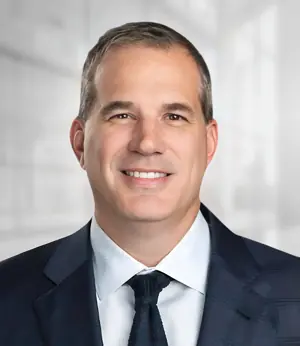Considering all the challenges the industry has faced in recent years, most of the major nameplate OEMs are coming off a financially solid 2024, while several other OEMs are contemplating their future. As we move into 2025 with a transition to a new presidential administration and inventory back to pre-pandemic levels, what financial uncertainty will OEMs and suppliers face? With a new administration, we could see a shift from a heavy-handed, government-directed focus on electrification to a more consumer-driven approach. EV doubters may breathe a sigh of relief, but not so fast.
The reality is that the electrification race is only beginning, and OEMs are not giving up. Battery technology, infrastructure, and cost parity will continue to evolve, leaving battery electric vehicles (BEVs) as a strong alternative for consumers. Now, short—and mid-term uncertainty remains for OEMs and suppliers that leaned into the transition to electric vehicles with billions of dollars in investments. The timing of the shift to EVs is only one of the factors and variables that the industry must contend with.
The challenges OEMs and suppliers face will be rooted in the same topics but quite different from each perspective.
Embracing uncertainty for OEMs
Uncertainty will come in many forms for OEMs, but for each problem, there are potential opportunities. The following variables will play a large factor in 2025 across many business areas.
Navigating global tension
The increase of tariffs and geopolitical tensions may become a larger risk on supply chain that could carry significant financial ramifications. OEMs can mitigate that risk with a continued focus on “build where you sell.” Those that are most successful, will localize and derisk their supply base through nearshoring or reshoring to maximize cost-benefit. In that case, Mexico could be a key player, but potential new tax legislation could be opportunistic for manufacturing in America.
Offsetting price pressure through various means
Cost-conscious consumers are demanding more affordable vehicles after the average cost of a new vehicle has risen to $50,000, a 30 percent increase since 2020. Capital investments for insourcing, automation, and vertical integration can increase productivity for OEMs. OEMs are increasing investment in cost reduction teams and technologies and may look to pursue the supply base to reduce costs by five to ten percent or reduce launch costs and timing through advanced manufacturing technologies.
Meeting varying consumer preferences
A combination of changing consumer preferences and environmental regulations will present the need for more niche offerings with multiple powertrain choices and platforms (BEV, hybrid, ICE). OEMs will look to bolster margins with niche offerings for smaller targeted audiences.
Competing on cost on a global scale
Domestic OEMs will continue to battle affordable vehicle options from China and look for ways to compete on cost. Certain companies will seek joint venture opportunities to be more competitive and increase investment in various areas.
Suppliers continue to tread water, face hard decisions
Similarly to OEMs, suppliers have been grappling with uncertainty, dealing with higher input costs, uncertain production volumes, global competition, and dwindling financial resources. 2025 will not bring any rest for suppliers, and the diversity of issues will present itself in the form of:
Fluctuating production mix and volume
In the short to mid-term, uncertain production volume and mix will continue. Suppliers will need to plan or “guess right” on which parts to produce under the right mix to maximize production capacity and manage inventory costs. Suppliers must optimize their high-mix, low-volume strategy to succeed. Understanding customer schedules and establishing an efficient sales and operations planning process will be critical components to the strategy.
Cost pressure from OEMs
OEMs will place a significant focus on cost improvement to maintain profitability amid uncertainty, affordability and global competition. It will be important for suppliers to understand their cost structure and be ready to defend their quotes to OEMs with detailed data. Surviving a cost improvement onslaught by OEMs will require suppliers to adopt their own culture of continuous cost improvements and procurement strategies. A defined procurement strategy may yield a three to ten percent savings on input purchases when implemented effectively.
Capital limitations preventing critical reinvestment
The most financially-sound suppliers will utilize capital to build scale, automation, invest in advanced manufacturing equipment to withstand the immense pressures in the industry. In turn, financially weak suppliers will struggle to keep up. These suppliers will need to become as lean as possible and increase profitability, to reinvest into the business to take advantage of automation and new equipment productivity.
Global competition
The industry has transformed multiple times and global competition has increased exponentially for suppliers. Suppliers need to assess their ability to compete. Perhaps for the first time, perhaps not, suppliers need to look at a consolidation strategy to prepare for multiple scenarios.
Challenges in the automotive industry is now a constant. The good news is that manufacturers have learned a lot from previous transformations and realize that the industry will constantly evolve and change. The future is bright, but OEMs and suppliers will need to plan accordingly and capitalize on opportunities to become an industry leader.
Have a Question?
Complete this form to ask our professionals a question.
By submitting this form, you agree to be contacted by UHY.




